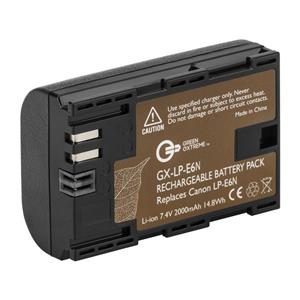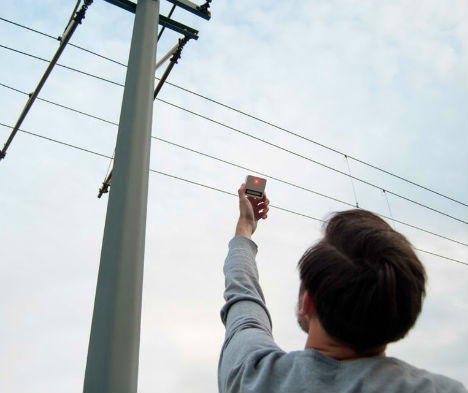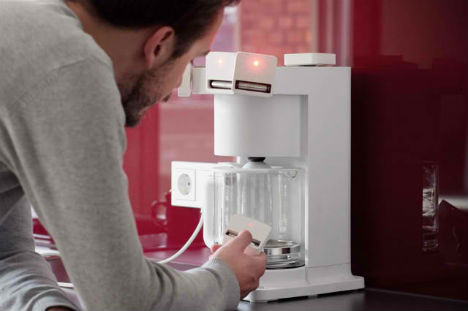 |
If you purchased a Nikon D800, D800E, D7000 or Nikon 1 V1 and are still shooting with the original EN-EL15 battery, or if you’ve ever purchased a spare EN-EL15 off the shelf, listen up. There’s a small chance you’re using a defective battery that could pose a danger to yourself and your camera body.
In an update to a recall first announced all the way back in 2012, Nikon is asking owners of certain EN-EL15 batteries to get in touch with the company about getting a complimentary replacement.
“The [affected] battery pack can experience a short circuit causing it to overheat and possibly causing the outside casing to become deformed, posing a potential hazard to consumers,” writes Nikon. “There have only been seven (7) confirmed reports of incidents of the problem worldwide, and while no injuries have taken place, Nikon Inc. has initiated this recall of the affected lot numbers as a reflection of its commitment to safety and product quality.”
 |
Affected batteries can be identified by the serial number. If the 9th number of the serial on the back is either an “E” or an “F” your battery is affected, and you should reach out to Nikon Inc. through this form to get a replacement. Do not dispose of the battery in the trash. You’ll need to give the defective battery to the UPS guy who brings you the new battery in exchange.
You can read the full recall text below:
EN-EL15 Rechargeable Li-ion Battery Pack Recall
UPDATED EN-EL15 SERVICE ADVISORY AS OF JUNE 20, 2017. Technical Service Advisory for users of the EN-EL15 rechargeable lithium-ion battery pack.
Nikon Inc. is asking your cooperation in connection with a voluntary recall of certain lot numbers of its Nikon Model EN-EL15 rechargeable lithium-ion battery pack. The battery pack can experience a short circuit causing it to overheat and possibly causing the outside casing to become deformed, posing a potential hazard to consumers. There have only been seven (7) confirmed reports of incidents of the problem worldwide, and while no injuries have taken place, Nikon Inc. has initiated this recall of the affected lot numbers as a reflection of its commitment to safety and product quality. We are asking that owners of the affected battery pack contact Nikon Inc. to initiate a free product exchange.
The Nikon EN-EL15 battery pack is provided as a supplied accessory with the purchase of Nikon’s digital SLR D800, D800E, D810A, D810, D610, D600, D7200, D7100, D7000, D500 cameras and the Nikon 1 V1 advanced camera with interchangeable lens. However, EN-EL15 batteries supplied with D810A, D810, D610, D600, D500, D7200, D7100 are not included in this voluntary recall. It is also sold separately at retail under Nikon’s model number 27011. The EN-EL15 battery pack involved in this recall was first distributed by Nikon in March 2012 and is still being sold at retail.
No other Nikon battery packs are involved in this recall.
Nikon’s digital SLR D800, D800E, D810A, D810, D610, D600, D7200, D7100, D7000, D500 cameras and the Nikon 1 V1 advanced camera with interchangeable lens as well as any other Nikon cameras are also not subject to this recall.
What you should do:
1.) Determine if your EN-EL15 battery pack is affected
This voluntary recall is limited to EN-EL15 battery packs in lots E and F. First, please confirm that “EN-EL15” is printed on the label of your battery pack. Then, please locate the 14-digit lot number beside the recycle symbol, as shown on the photo below.
- If the 9th character of the lot number is E or F, your battery is among those being recalled.
- If the 9th character of the lot number is any other letter, your battery is not affected by this recall.
Click here to use our lot number lookup tool.
2.) If your EN-EL15 battery pack is affected
- Immediately remove the battery from your camera or camera bag, but please do not dispose of it.
- Complete the Nikon’s online EN-EL15 battery exchange form by clicking this link.
- Once your request is processed Nikon will send a confirmation email.
- On the day of your battery exchange, UPS will contact you by phone and email notifying you of the delivery.
- A UPS courier will then deliver your new battery pack(s) AND collect the recalled battery pack(s).
- Someone needs to be present for this exchange. If you need to make special arrangements, please contact UPS.
3.) If your EN-EL15 battery pack is not affected
No further action is needed. Please continue using your EN-EL15 battery pack as usual.
Nikon is committed to safety and to providing to its customers only the highest quality products. We regret any inconvenience this matter may cause you and appreciate your continued support of Nikon and its products.
If you have any additional questions or concerns, please contact Nikon at 1-800-645-6687.
Articles: Digital Photography Review (dpreview.com)














 Do you use third party batteries? If you don’t, do you even care one way or the other?
Do you use third party batteries? If you don’t, do you even care one way or the other?











You must be logged in to post a comment.